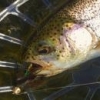Sign in to follow this
Followers
0

Crackle Backs - What's your favorite body material/color?
By
jd1983, in The Fly Tying Bench

By
jd1983, in The Fly Tying Bench